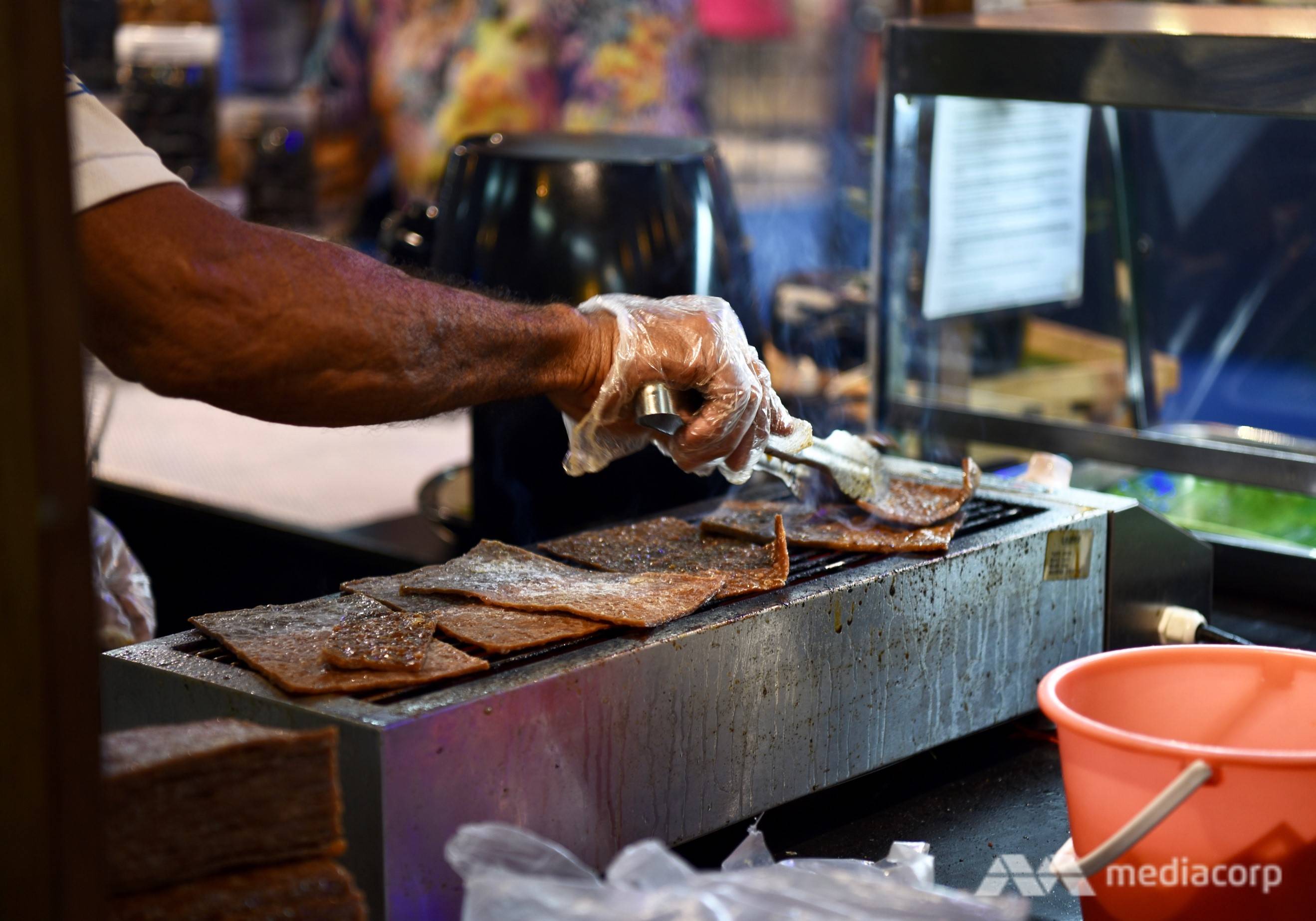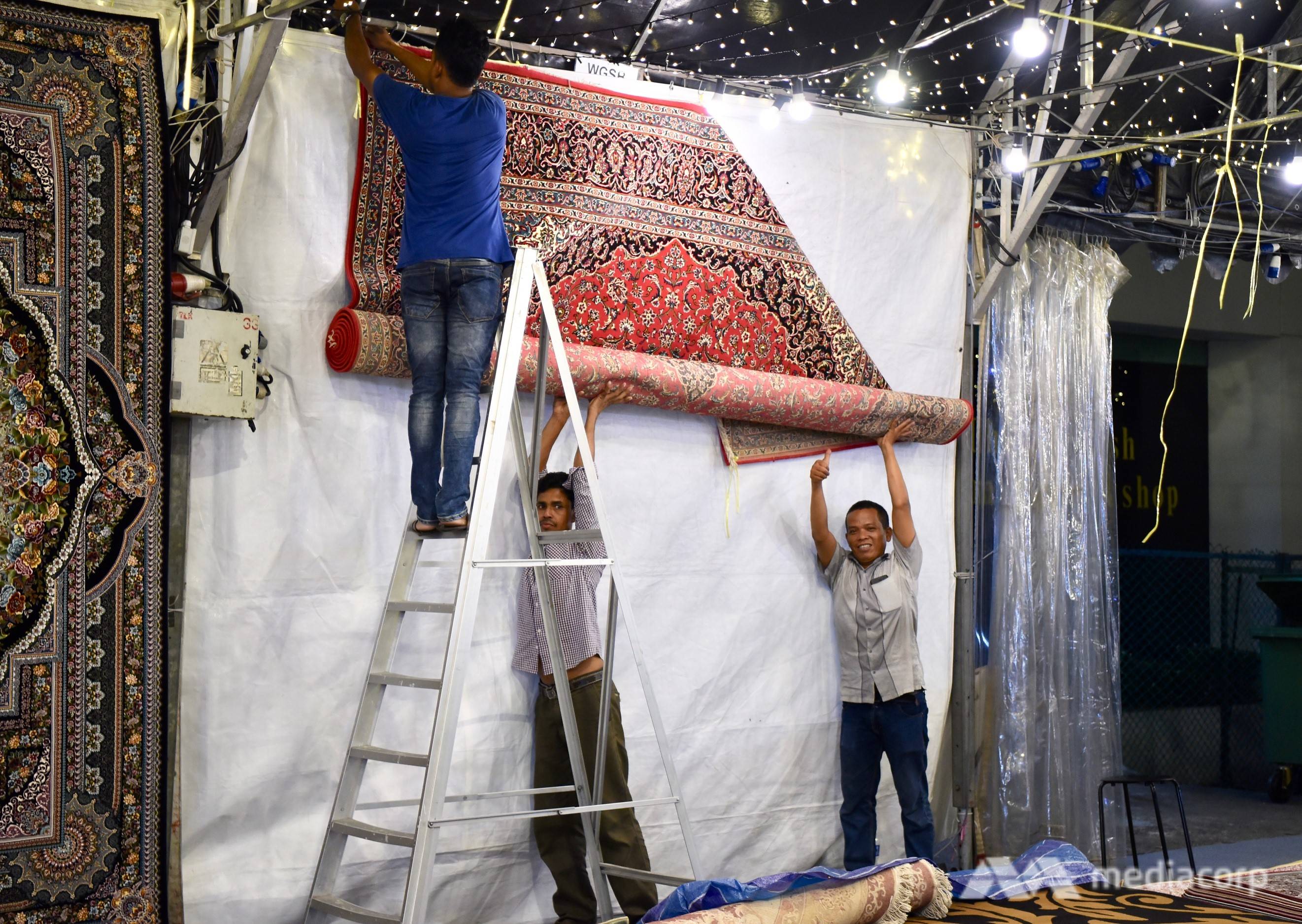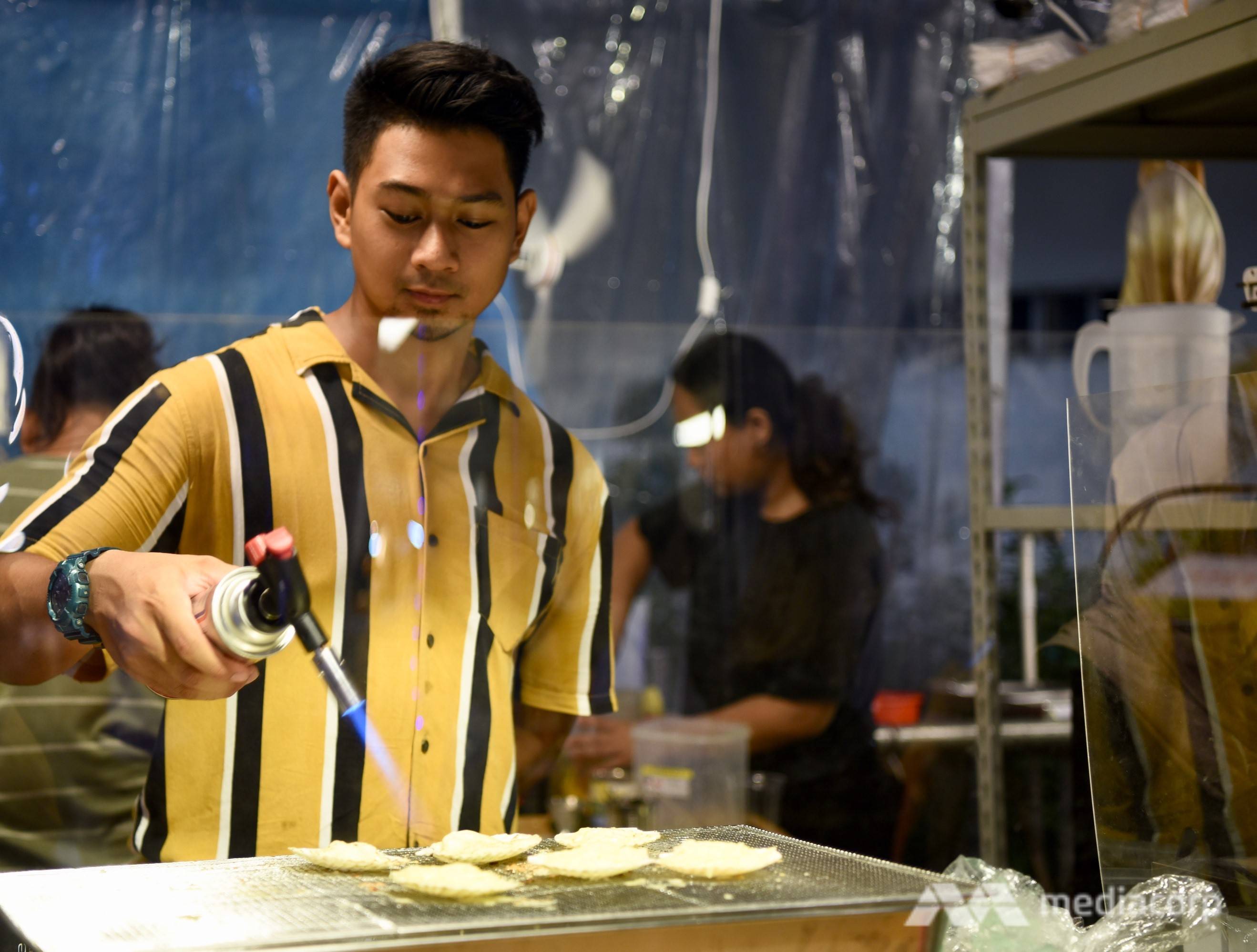SINGAPORE: Gotong-royong – a Malay term popular in the 60s and 70s – refers to the spirit of working together in a community. As the month of Ramadan begins, that spirit is alive and well at the Geylang Serai Ramadan bazaar.
For instance, 37-year-old Idris Ma had his uncle, Mr Mohamad Soleh, fly all the way from Qinghai, China, to assist him in running his Islamic calligraphy stall at the bazaar.
Their stall, called Khaira Chinese Islamic Calligraphy, incorporates traditional Chinese calligraphy with Arabic words on paintings.
Owner of Khaira Chinese Islamic Calligraphy Idris Ma (right) and his uncle Mohamad Soleh. (Photo: Alif Amsyar)
“This is our fourth year at the bazaar in Geylang Serai and every year during Ramadan, when the festive lights are on, it’s like a festival for everyone, no matter what race. Even tourists come to the bazaar and are able to see our works,” Mr Ma said.
“Since my uncle is also very busy in China, I mostly invite him here to stay for two weeks to help out at our stall,” he said with a laugh.
READ: Lobsters, bubble tea and a ‘praffle’: What to eat at Geylang Serai Bazaar 2019
With Hari Raya light installations stretching across Geylang Road, Sims Avenue and Changi Road, many have spent their weekends at the bazaar with family and friends.
For Mr Hossain Saddam, originally from Bangladesh, the bazaar during the fasting month reminds him of home.
Mr Hossain Saddam and his two friends say the Geylang Serai Bazaar reminds them of the festivities in their home country, Bangladesh. (Photo: Alif Amsyar)
“Today is my off day and I’m here with my friends to buy food and clothes. The Geylang bazaar is a very nice place and the lights are beautiful, and there’s delicious food,” the 29-year-old said.
“Now that it’s Ramadan, it’s also very beautiful in Bangladesh, all decorated. The three of us have been in Singapore for nine years. I wish my family all the best during the fasting month,” he added.
With most of the food stalls being required to sell traditional delicacies this year, stalls selling the likes of dendeng and otah otah saw snaking queues throughout the evening.
READ: Geylang Serai Bazaar: Most stalls to sell traditional Malay goods, food required to meet halal criteria

Most stalls this year sell traditional goods related to Hari Raya and the Malay culture, including the hot favourite dendeng. (Photo: Alif Amsyar)
The Turkish kebab is now a staple at the Ramadan bazaar. (Photo: Alif Amsyar)
The Geylang Serai Bazaar saw 1.86 million visitors last year, of which 76 per cent were local visitors. Over the years, the bazaar has become a festive event not only for the local Malay-Muslim population in Singapore, but for other Singaporeans and tourists alike.

Workers setting up a carpet store at the bazaar, which opened on May 3, 2019. (Photo: Alif Amsyar)
This year’s bazaar is organised thematically – stalls selling traditional Malay delicacies and those selling modern food options are separated and demarcated accordingly. (Photo: Alif Amsyar)
It’s not too early for some to have their henna fix, well before the Hari Raya celebrations next month. (Photo: Alif Amsyar)

Delicacies from other countries have proven popular at the bazaar, such as traditional Lebanese food at a stall run by Tabbouleh Lebanese Gourmet Cafe and Restaurant. (Photo: Alif Amsyar)
While many running the food stalls are no strangers to the bazaar, some, such as those from The Mala Stop, are first-timers.
“It’s exciting but also quite intimidating because everyone looks like they are veterans, like they’ve been here for a long time. You have all those ayam perciks and Ramly burger stalls who’ve been here for so many years,” said The Mala Stop stall manager Reyna, 26.
“But we want to take this chance to give our Muslim friends the chance to taste mala, let them understand the taste and not confine it to being just a dish for the Chinese,” she added.

A section of the bazaar selling non-traditional food draws large crowds, especially younger visitors. (Photo: Alif Amsyar)
This year, the bazaar has about 500 stalls that will run until Jun 5, and for the first time, is fully coordinated by Wisma Geylang Serai, a Malay-Muslim social and cultural heritage hub.




